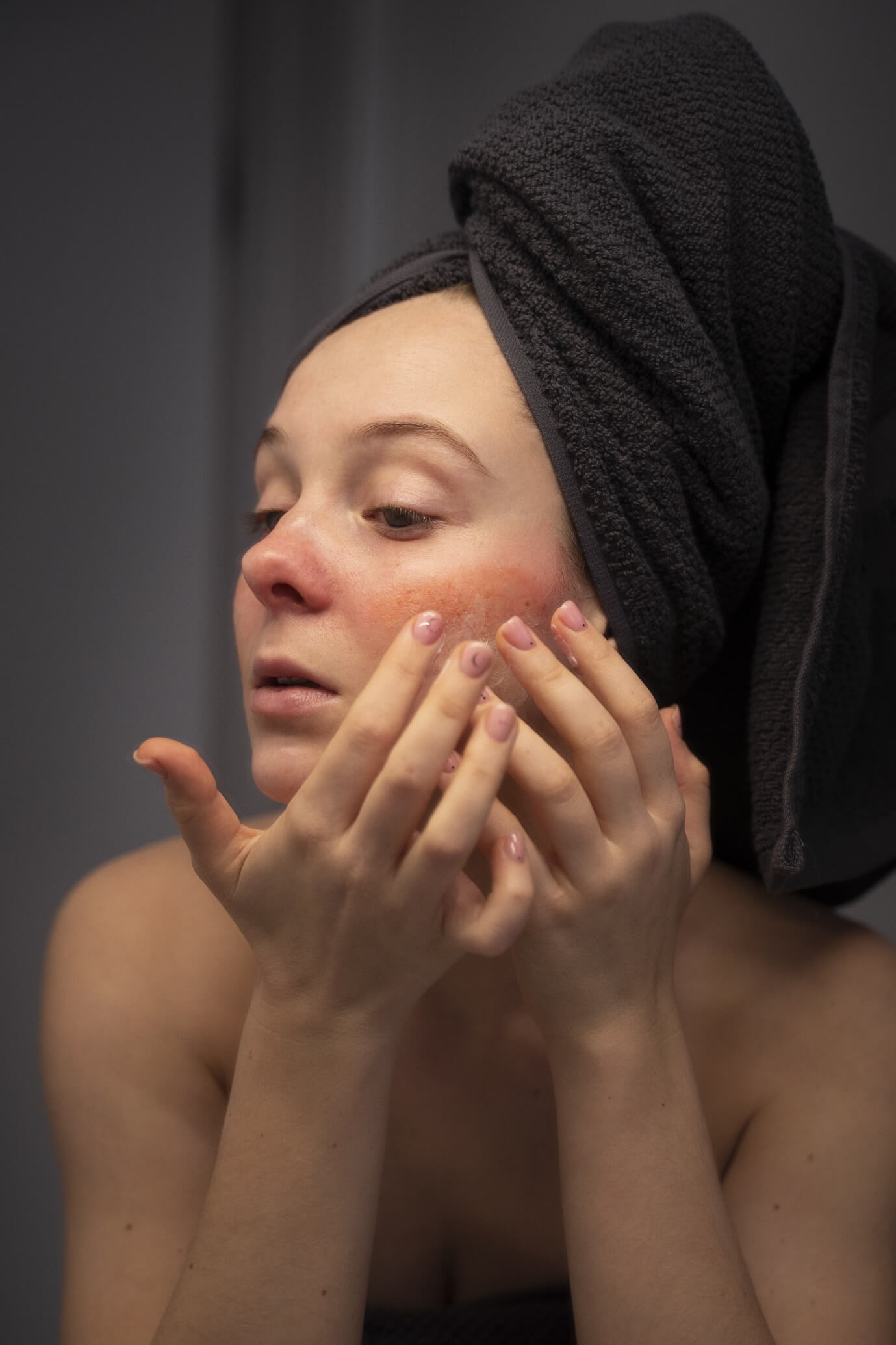Understanding and Managing Rosacea: Types, Symptoms, Triggers, Treatments and Preventions
Rosacea is a chronic skin condition that primarily affects the face, leading to persistent redness, visible blood vessels, and sometimes acne-like breakouts. In some cases, it can cause thickening of the skin and eye irritation. Rosacea is a long-term condition that often fluctuates in severity, with periodic flare-ups and remissions. While there is no known cure, understanding its types, symptoms, triggers, and treatment options can help individuals manage and minimize its effects effectively.
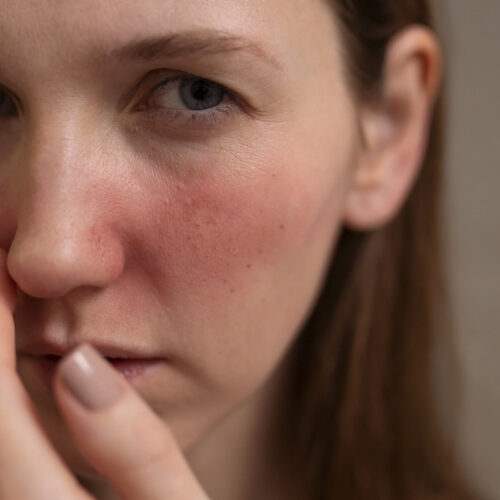
What Is Rosacea?
Rosacea is an inflammatory skin disorder that affects millions of people worldwide. It is characterized by facial redness, swelling, and small pus-filled bumps that may resemble acne. However, unlike acne, rosacea does not produce blackheads or whiteheads. It primarily affects adults over the age of 30, though it can develop in younger individuals.
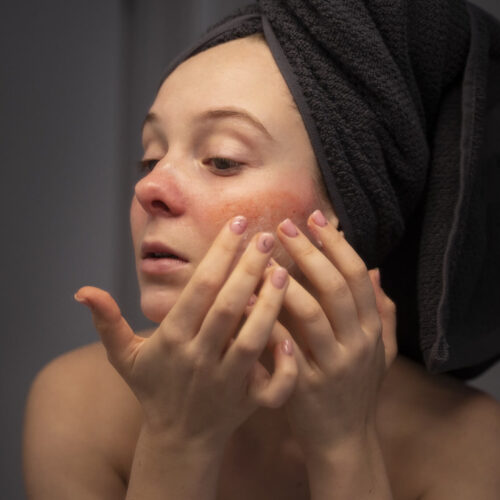
Rosacea is a long-term inflammatory skin condition that causes reddened skin and a rash, usually on the nose and cheeks. It may also cause eye problems. The condition tends to be more common in people with fair skin, but it can affect individuals of all skin tones.
How Common Is Rosacea?
According to research, rosacea affects approximately more than 10% of the global population. The condition is more prevalent in women, but men tend to experience more severe symptoms, particularly rhinophyma (thickening of the skin on the nose). While it is often seen in people of European descent, rosacea can affect individuals from various ethnic backgrounds.
Risk Factors
Rosacea can affect anyone, but certain factors may increase the likelihood of developing the condition. You may be at a higher risk if you:
- Have fair skin that is sensitive to sunlight and burns easily.
- Are between the ages of 30 and 50.
- Have a history of smoking, which can impact skin health.
- Have close family members who also have rosacea, suggesting a genetic link.
While these factors may contribute to rosacea, the exact cause remains unclear. Identifying triggers and taking preventive measures can help manage the condition effectively.
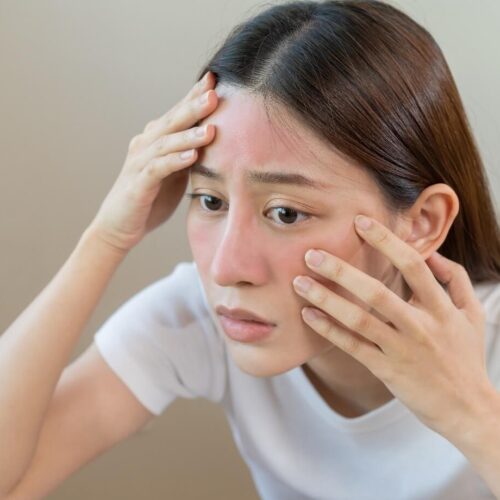
Complications of Rosacea
Rosacea is generally a manageable condition, but if left untreated, it may worsen over time. While serious complications are rare, some individuals may develop more severe forms of the condition.
1. Rosacea Fulminans
A rare but severe complication, rosacea fulminans, occurs suddenly and leads to large, red bumps, spots, and cysts on the face. In some cases, this can result in scarring. Treatment often involves corticosteroid tablets to reduce inflammation, along with isotretinoin tablets to control severe breakouts.
2. Ocular Rosacea
When rosacea affects the eyes, it can cause discomfort and, if untreated, may lead to serious eye conditions, including:
- Keratitis – Inflammation of the cornea, which can cause pain, blurred vision, and sensitivity to light.
- Conjunctivitis – Redness and irritation due to inflammation of the tissue lining the eye and eyelid.
- Anterior Uveitis – Inflammation of the iris or ciliary body, which can lead to vision problems if not treated promptly.
Impact on Mental Health and Daily Life
Managing rosacea often involves avoiding certain triggers, which can interfere with daily activities and social interactions. Constantly trying to prevent flare-ups may contribute to stress, anxiety, and even depression in some individuals. Seeking support from healthcare professionals or support groups can be beneficial in coping with the emotional impact of the condition.
How Does Rosacea Develop?
Although the exact cause of rosacea is unknown, experts believe it results from a combination of genetic and environmental factors. The immune system, vascular system, and nervous system may all play a role in its development. Some research suggests that an overactive immune response may contribute to inflammation, leading to rosacea symptoms. Other studies have linked rosacea to the presence of microscopic skin mites known as Demodex folliculorum, which can trigger an inflammatory reaction.
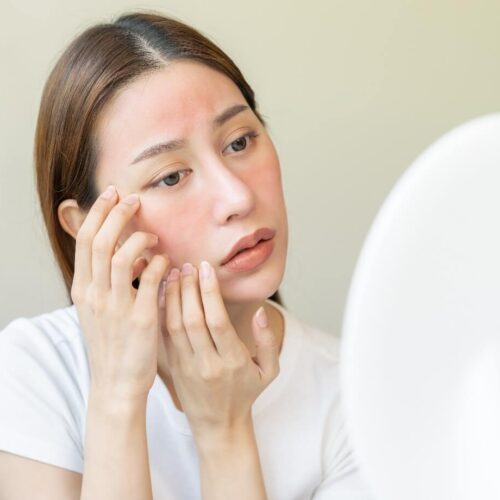
Causes of Rosacea
The exact cause of rosacea remains unclear, but research suggests that it may be linked to several underlying factors. While no single cause has been identified, experts believe that a combination of genetic, environmental, and immune system responses may contribute to the development of rosacea.
- Blood Vessel and Nervous System Issues – Some studies suggest that rosacea may be related to abnormalities in the blood vessels or nervous system. When blood vessels in the face dilate too easily, it can lead to persistent redness and inflammation, a key characteristic of rosacea.
- Microscopic Skin Mites (Demodex) – The human skin naturally hosts microscopic mites called Demodex, particularly around the nose and cheeks. While they are harmless in most people, an excessive number of these mites may contribute to inflammation and irritation, triggering rosacea symptoms.
- Bacterial Infection (H. pylori) – Helicobacter pylori (H. pylori) is a type of bacteria that can infect the stomach lining, leading to digestive issues. Some studies suggest that people with H. pylori infections are more likely to develop rosacea, possibly due to its impact on the immune system and inflammation levels.
- Malfunctioning of Skin Proteins –The cathelicidin protein plays a vital role in protecting the skin from infections. However, if this protein does not function properly, it may cause excessive inflammation, resulting in the redness and swelling seen in rosacea.
Signs and Symptoms of Rosacea
Rosacea presents itself differently in each individual, and not everyone experiences all symptoms. However, certain primary signs are always present, making it easier to identify the condition.
Early Signs of Rosacea
- Frequent Flushing – Many individuals with rosacea experience episodes of facial flushing or blushing, which may occur suddenly and repeatedly. This is often one of the earliest indications of the condition.
- Persistent Redness – Unlike temporary redness from blushing, rosacea-related facial redness remains for extended periods, often resembling a sunburn that does not fade.
- Bumps and Pimples – Some people develop red, swollen bumps or pus-filled pimples on their face. These can be mistaken for acne, but unlike acne, rosacea does not produce blackheads. Burning or stinging sensations may also accompany these breakouts.
- Visible Blood Vessels –Small, dilated blood vessels often become noticeable just beneath the surface of the skin, creating a web of thin red lines.
Common Symptoms of Rosacea
Apart from these primary signs, rosacea can also lead to the following symptoms:
- Eye Irritation – The eyes may become dry, watery, or bloodshot, often leading to discomfort. Some people develop swollen eyelids or styes. Severe cases of ocular rosacea, if untreated, can potentially affect vision.
- Burning or Stinging Sensations – Many individuals experience sensations of burning, stinging, or itching on their face. This can contribute to overall discomfort and sensitivity.
- Dry and Rough Skin – Rosacea can cause facial skin to appear rough, scaly, or extremely dry, further aggravating irritation.
- Raised Red Patches (Plaques) – Some individuals develop areas of raised, inflamed skin that stand out against the surrounding skin, giving a rash-like appearance.
- Thickened Skin (Rhinophyma) – In advanced cases, the skin, particularly on the nose, may thicken and become enlarged. This condition, known as rhinophyma, results in a bulbous nose and is more common in men.
- Facial Swelling – Swelling of the face, also known as edema, can occur alone or alongside other rosacea symptoms, further contributing to discomfort.
Recognizing these signs early and seeking medical guidance can help manage rosacea effectively and prevent worsening symptoms.
Where do Rosacea Affect My Body?
Rosacea symptoms can appear on various parts of the body, primarily affecting the face, including the nose, cheeks, chin, and forehead. In some cases, it may also impact the eyes, ears, scalp, neck, and chest, leading to redness, irritation, and sensitivity in these areas.
- Face region (including cheeks, nose, forehead, and chin).
- Upper body areas (chest and neck).
- Head region (scalp and ears).
- Eye area (potentially affecting vision).
Rosacea on Different Skin Tones
Rosacea on Fair Skin Tones
In individuals with fair skin, rosacea commonly appears as redness on the cheeks, nose, and central face. Small red bumps or pus-filled pimples may also develop, making the condition more noticeable.
Rosacea on Brown and Darker Skin Tones
In people with darker skin tones, the flushing and redness associated with rosacea may be less visible. Instead, other symptoms like warmth, swelling, or small bumps should be observed to identify the condition.
Types of Rosacea
There are four primary types of rosacea, each presenting with different symptoms and severity:
- Erythematotelangiectatic Rosacea (ETR) – This type is characterized by persistent redness, visible blood vessels, and occasional flushing. The skin may feel dry, sensitive, and prone to irritation.
- Papulopustular Rosacea – Often mistaken for acne, this form involves redness, swelling, and breakouts of pus-filled pimples. It is more common in middle-aged women.
- Phymatous Rosacea – This rare type leads to thickened skin, particularly on the nose, causing it to appear swollen and bulbous. It can also affect the forehead, chin, and ears.
- Ocular Rosacea – This type affects the eyes, causing symptoms such as dryness, redness, burning, and swollen eyelids. Severe cases can impact vision.
Possible Triggers of Rosacea
While the exact cause of rosacea remains unknown, various factors can trigger or worsen its symptoms. Common triggers include:
- Sun Exposure – Ultraviolet (UV) rays can damage the skin and trigger inflammation, leading to flare-ups. Using sunscreen daily can help protect the skin.
- Emotional Stress – Stress and anxiety can lead to flushing and worsen rosacea symptoms. Practicing relaxation techniques can help manage stress levels.
- Hot and Cold Weather – Extreme temperatures, wind, and humidity can aggravate the skin and lead to flare-ups.
- Spicy Foods and Alcohol – Consuming spicy foods and alcoholic beverages (especially red wine) can cause blood vessels to dilate, leading to increased redness and flushing.
- Skincare Products – Harsh skincare products containing alcohol, fragrance, or exfoliating agents can irritate sensitive skin.
- Exercise – Strenuous activity increases body temperature and blood flow to the skin.
- Medications – Some drugs that dilate blood vessels, such as certain blood pressure medications, can trigger rosacea.
Acne vs. Rosacea
While both acne and rosacea can cause pimples, they are distinct conditions:
- Location: Acne can appear anywhere on the body, while rosacea is usually confined to the face.
- Lesions: Acne typically involves blackheads and whiteheads, whereas rosacea does not.
- Redness: Rosacea breakouts are more likely to involve redness and visible blood vessels.
- Age of Onset: Acne commonly affects teenagers and young adults, while rosacea often develops in people over the age of 30.
- Treatment: Acne treatments usually involve benzoyl peroxide, salicylic acid, and retinoids; while rosacea management involves avoiding triggers and using gentle, anti-inflammatory skincare products. Laser treatments can help reduce redness and visible blood vessels, or for more severe cases, taking oral or topical antibiotics may be an option.
Redness/Sensitivity vs. Rosacea
Distinguishing between general skin sensitivity and rosacea is crucial:
- Duration of Redness: Sensitivity-induced redness is often temporary, while rosacea causes persistent redness.
- Associated Symptoms: Rosacea may include visible blood vessels, acne-like bumps, and eye irritation, which are not typical of general sensitivity.
- Triggers: While both can be triggered by environmental factors, rosacea has a broader range of specific triggers.
Rosacea vs. Lupus Rash
Though rosacea and lupus rash share similarities, they have distinct differences in appearance, texture, and impact on the skin.
- Affected Areas: Both conditions commonly affect the face, particularly the cheeks and nose. However, lupus rash can also appear on other body parts.
- Reaction to Sun Exposure: Both rosacea and lupus rash can worsen with sun exposure, making sun protection essential.
Appearance and Texture
- Rosacea: Causes redness, swelling, and small bumps, often resembling acne.
- Lupus Rash: Appears as red, scaly, and itchy patches, which may cause discomfort.
Long-Term Effects
- Rosacea is a non-threatening skin condition.
- Lupus Rash can lead to scarring, hair loss, and lasting skin damage if untreated.
Consult a doctor for an accurate diagnosis and treatment if you experience persistent symptoms.
Is Rosacea an Autoimmune Disease?
Ongoing research is exploring whether rosacea is an autoimmune condition. In some cases, rosacea may occur due to an overactive immune response. The immune system, which is responsible for defending the body against harmful invaders like bacteria, may mistakenly attack healthy skin cells in people with rosacea.
One theory suggests that a specific bacterium called Bacillus oleronius, commonly found in individuals with papulopustular rosacea, may trigger an immune response that leads to inflammation and skin irritation.
Additionally, some people with rosacea have immune systems that are highly sensitive to external changes, such as sunlight exposure, temperature fluctuations, or environmental stressors. This heightened sensitivity may cause the immune system to overreact, leading to the characteristic redness, bumps, and irritation of rosacea.
While researchers continue to investigate the exact causes of rosacea, understanding these potential triggers can help individuals manage their symptoms more effectively through lifestyle changes and medical treatments.

Rosacea Treatment Options
Although rosacea has no permanent cure, its symptoms can be effectively controlled with the right treatments. Managing redness, bumps, and inflammation requires a combination of topical treatments, oral medications, and cosmetic procedures. If symptoms persist, consulting a doctor is essential.
Topical Treatments for Rosacea
Several topical treatments help reduce inflammation and redness associated with rosacea:
- Azelaic Acid: This ingredient helps clear up bumps and redness while gently exfoliating the skin. It also works to reduce acne scars, dark spots, and melasma, making it beneficial for rosacea-prone skin.
- Brimonidine: Often available in gel form, this medication tightens blood vessels in the skin to reduce visible redness. It is also used as eye drops for treating ocular rosacea.
- Niacinamide: A form of vitamin B3, niacinamide has anti-inflammatory properties that help soothe rosacea flare-ups.
- Calcineurin Inhibitors: Medications like pimecrolimus and tacrolimus can help control inflammation without the side effects of steroids.
- Ivermectin: This treatment fights inflammation and helps eliminate certain mites that may contribute to rosacea symptoms.
- Oxymetazoline: Reduces persistent redness by constricting blood vessels.
- Sodium Sulfacetamide & Sulfur: These ingredients act as antibacterial agents, helping to manage rosacea-related bacterial infections.
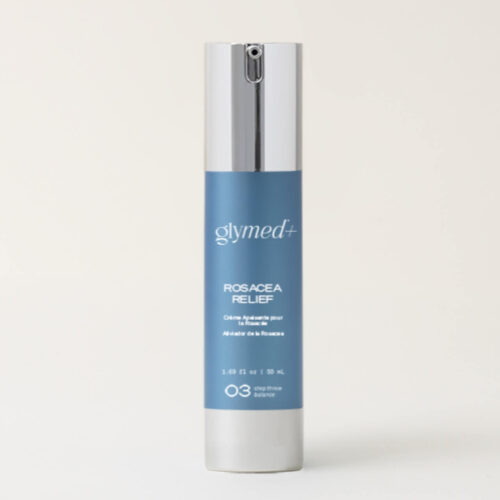
Oral Medications for Rosacea
In some cases, oral medications may be necessary to control rosacea symptoms:
- Antibiotics: Commonly prescribed options include clindamycin, erythromycin, metronidazole, and doxycycline, which help reduce inflammation and fight bacteria.
- Isotretinoin: A strong acne medication sometimes used for severe rosacea, but it should be avoided during pregnancy due to potential risks to the unborn child.
Cosmetic Procedures for Rosacea:
For individuals with persistent redness or thickened skin, cosmetic treatments may offer relief :
- Laser Therapy: Intense light treatments target blood vessels, making them less visible while also improving skin texture.
- Electrosurgery & Dermabrasion: These procedures help remove thickened skin caused by rosacea, although they may carry risks of scarring and irritation.
Since rosacea symptoms vary, treatment should be tailored to each individual. A dermatologist can recommend the best approach based on the severity of the condition.
Lifestyle and Skincare Modifications
- Use gentle cleansers to avoid irritating the skin.
- Moisturize regularly to maintain a healthy skin protection.
- Wear sunscreen to protect against UV-induced flare-ups.
Diet and Rosacea
Certain foods may exacerbate rosacea symptoms. It is best to:
- Avoid spicy foods, hot beverages, and alcohol.
- Incorporate anti-inflammatory foods such as green leafy vegetables, fatty fish, and probiotics.
- Stay hydrated to keep the skin healthy.
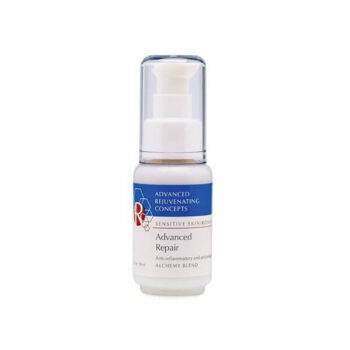
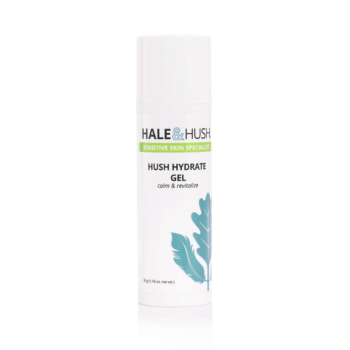
Skincare Products to Help Manage Rosacea
Managing rosacea involves using gentle skincare products that soothe and protect the skin. Here are some recommended products:
- Gentle Cleanser: A mild, fragrance-free cleanser helps remove impurities without irritating the skin.
- Hydrating Serum: A serum containing hyaluronic acid can provide moisture and strengthen the skin barrier.
- Soothing Moisturizer: Look for products with ingredients like niacinamide and ceramides to calm inflammation and repair the skin barrier.
- Sun Protection: Daily use of a broad-spectrum sunscreen with SPF 30 or higher is essential to protect against UV-induced flare-ups.
Maintaining a Stable Temperature to Prevent Rosacea Flare-Ups
Changes in temperature can trigger rosacea symptoms due to the skin’s sensitivity to heat, cold, and pain. Keeping your body temperature stable can help reduce flare-ups and maintain comfort.
1. Regulating Body Temperature
One of the simplest ways to manage rosacea is by avoiding extreme temperature shifts. Dressing in layers allows for easy adjustments based on the environment. Avoid sitting near heat sources, stay well-hydrated, and opt for lukewarm showers and baths instead of very hot ones. On hot days, carrying an extra set of clothes can help if excessive sweating occurs.
2. Weather Protection
Extreme weather conditions, such as strong sun or harsh winds, can worsen rosacea. Using a broad-spectrum sunscreen with a high SPF and wearing a wide-brimmed hat during sunny days can protect the skin from harmful UV rays. In colder or windy conditions, a scarf or a jacket with a high collar can shield the face from exposure.
3. Being Mindful of Food and Beverages
The temperature of the food and drinks you consume can impact your body temperature and potentially trigger rosacea symptoms. Extremely hot foods or beverages can cause facial flushing. Some people find that consuming cold drinks helps regulate their body temperature and prevent flare-ups. Keeping meals at a moderate temperature may be a useful strategy for symptom control.
4. Staying Cool While Exercising
Physical activity is essential for overall health, but overheating can trigger rosacea symptoms. To stay cool, consider working out in an air-conditioned space, swimming, or exercising in the early morning or evening when temperatures are lower. Keeping cold water or a damp cooling towel on hand can help, but avoid anything too cold that could shock the system.
By taking these precautions, individuals with rosacea can reduce flare-ups and maintain greater control over their symptoms.
Natural Remedies for Rosacea Relief
Many natural ingredients contain anti-inflammatory and soothing properties that help manage rosacea symptoms effectively. While these remedies do not provide a permanent cure, they can help reduce redness, irritation, and flare-ups.
1. Aloe Vera
Aloe vera is a common ingredient in skincare products due to its natural healing properties. The gel extracted from the aloe plant provides a cooling effect, soothing inflamed and irritated skin. Applying fresh aloe vera gel directly to the affected areas may help reduce redness and discomfort. However, people with sensitive skin should perform a patch test before use.
2. Burdock Root
Burdock root is well known for its detoxifying properties. It helps cleanse the body from within, which can have a positive effect on skin conditions, including rosacea. Consuming burdock root tea or supplements may contribute to healthier skin over time.
3. Chamomile
Chamomile is widely recognized for its calming and anti-inflammatory effects. This natural remedy can be used in the form of essential oil or tea to soothe irritated skin. Applying diluted chamomile oil or using chamomile-infused compresses can help reduce rosacea-related redness and inflammation.
4. Coconut Oil
Coconut oil is an excellent natural moisturizer with antioxidant and anti-inflammatory benefits. While it may not be a direct treatment for rosacea, it helps retain moisture and protect the skin barrier. Applying a small amount of coconut oil can provide hydration and soothe dryness.
5. Feverfew
Feverfew is known for its ability to protect the skin from environmental triggers, including UV rays. It has anti-inflammatory properties that help reduce redness and irritation. Some skincare products contain feverfew as an ingredient for rosacea-prone skin.
6. Green Tea
Rich in antioxidants, green tea is an effective natural remedy to reduce inflammation. Drinking green tea regularly or applying green tea extracts topically can help calm sensitive skin and prevent flare-ups.
7. Raw Honey
Raw honey is a natural humectant, meaning it helps retain moisture in the skin. Applying raw honey as a face mask can hydrate dry, rosacea-prone skin and reduce irritation.
8. Turmeric
Turmeric is one of the most effective natural anti-inflammatory ingredients. Its active compound, curcumin, helps reduce redness and swelling associated with rosacea. Mixing turmeric with honey or yogurt and applying it as a face mask can improve skin health.
Using these natural remedies alongside a proper skincare routine can help manage rosacea symptoms. However, it’s always best to consult a dermatologist before trying any new treatment.
Living with Rosacea
Living with rosacea can be challenging, but with the right approach, you can manage symptoms effectively. Apart from medical treatment, making lifestyle changes and identifying personal triggers can help control flare-ups. Here are some practical ways to live comfortably with rosacea.
Psychological Impact of Rosacea
Rosacea can affect self-esteem and confidence. Many individuals experience social anxiety and depression due to their skin condition. Seeking support from dermatologists, mental health professionals, or support groups can help individuals cope with the emotional aspects of rosacea.
Identify and Avoid Personal Triggers
Understanding what worsens your rosacea is essential. Keeping a diary of your activities, diet, and environmental conditions can help you pinpoint specific triggers. While triggers vary from person to person, some of the most common ones include:
- Sun exposure
- Emotional stress
- Extreme temperatures (hot or cold)
- Strong winds
- Intense physical activity
- Alcohol consumption
- Hot baths and showers
- Spicy foods
- Beverages served at high temperatures
Avoiding these triggers can significantly reduce the frequency and severity of rosacea flare-ups.
Using a Journal to Track Triggers
Maintaining a journal can help pinpoint specific factors that contribute to flare-ups. This includes tracking dietary habits, environmental exposures, physical activities, and emotional stress.
Elimination Method for Better Control
An elimination journal allows individuals to systematically track potential triggers by documenting symptoms and related activities. Over time, patterns emerge, helping to identify specific causes. If certain triggers cannot be eliminated entirely, adjusting lifestyle factors may help achieve better control over symptoms.
By recognizing and managing triggers, individuals with rosacea can reduce flare-ups and maintain a better quality of life.
What to Expect with Rosacea?
Rosacea is a long-term skin condition with periods of remission and flare-ups. The symptoms may appear unexpectedly and then subside for some time. While rosacea does not cause serious health complications, severe cases can lead to noticeable skin changes, particularly on the nose, causing thickening of the skin (rhinophyma).
Mild to moderate cases can be managed with topical treatments, oral medications, or over-the-counter (OTC) creams and gels. In extreme cases, medical procedures such as laser therapy or surgery may be necessary to address skin thickening.
Is There a Cure for Rosacea?
Currently, there is no permanent cure for rosacea. However, treatment can help keep symptoms under control. A combination of prescribed medication, lifestyle adjustments, and skincare can help manage the condition effectively. Consulting a dermatologist will allow you to develop a personalised treatment plan to reduce flare-ups and maintain long-term remission.
Can I cover rosacea with makeup?
For individuals looking to minimise the visible redness and bumps caused by rosacea, makeup can be a helpful tool. Here are some tips for choosing the right products:
- Green-tinted moisturizers: These help neutralize redness and balance the skin tone.
- Oil-free foundations and concealers: Choose a shade slightly lighter than your natural skin tone for the best coverage.
- Mineral-based powders: These have fewer ingredients, reducing the risk of irritation.
- Fragrance-free or hypoallergenic products: Avoiding harsh chemicals can prevent further skin irritation.
- Sunscreen-infused makeup: Many cosmetic products contain SPF, providing extra protection against sun exposure, which is a common trigger for rosacea.
Additionally, some topical antibacterial creams can help reduce redness and small acne-like bumps associated with rosacea.
When to Seek Medical Advice or Skincare Advice
If you experience persistent facial redness, irritation, or eye discomfort, it’s best to consult a healthcare professional for proper diagnosis and treatment. A dermatologist, a specialist in skin conditions, can help determine the best approach to managing rosacea, especially if your symptoms cause pain or discomfort.
Questions to Ask Your Doctor or Esthetician
When visiting your doctor, consider asking:
- How can I prevent flare-ups?
- What skincare products are safe for my condition?
- How often should I take my prescribed medication?
- Is it okay to use makeup with my symptoms?
- Would Laser based treatments be necessary for my condition?
Discussing these concerns with your healthcare provider can help you manage rosacea effectively and improve your skin health.
How is Rosacea Diagnosed?
Rosacea is diagnosed through a detailed evaluation of your symptoms and medical history. Your healthcare provider will examine your skin for common signs like redness, bumps, pimples, or irritation. Since there is no specific test for rosacea, diagnosis is based on clinical observation. If necessary, you may be referred to a dermatologist who specializes in skin conditions.
How Long Does Treatment Take to Work?
The time needed for treatment to show results varies. It may take a few weeks to several months before you notice an improvement. If your doctor prescribes medication, they will monitor your progress and adjust the dosage accordingly. As symptoms improve, the dosage may be reduced. Regular follow-ups with your healthcare provider will ensure the treatment remains effective and helps keep flare-ups under control.
Managing Rosacea: Essential Tips for Control
Effectively managing rosacea requires a combination of medical treatments and lifestyle adjustments. Identifying personal triggers and taking preventive measures can significantly reduce flare-ups. Here are some essential tips to help keep rosacea under control.
1. Protect Your Skin from the Sun
Sun exposure is one of the most common causes for rosacea. Use a sunscreen with at least SPF 30 daily. Wearing a wide-brimmed hat and seeking shade during peak sunlight hours can also help protect your skin.
2. Avoid Common Triggers
Certain factors can worsen rosacea, including hot weather, spicy foods, alcohol, and excessive humidity. Identifying and avoiding these triggers can help prevent sudden flare-ups. Keeping a journal to track what aggravates your symptoms may be useful.
3. Shield Your Skin in Cold Weather
Harsh winter conditions can irritate rosacea-prone skin. Use a gentle, hydrating moisturizer to create a protective barrier against the cold. Cover your face with a scarf to shield it from wind and freezing temperatures.
4. Follow a Gentle Skincare Routine
Rosacea-prone skin is highly sensitive, so it’s important to use mild, fragrance-free skincare products. Avoid harsh exfoliants and alcohol-based cleansers that can cause irritation. Instead, opt for soothing cleansers and lightweight, non-comedogenic moisturizers.
5. Prioritize Eye Care
For those experiencing ocular rosacea, proper eye hygiene is crucial. Clean your eyelids gently with warm water and a mild cleanser to reduce irritation and prevent complications. Using lubricating eye drops may also help relieve discomfort.
6. Manage Stress Effectively
Emotional stress can contribute to rosacea flare-ups. Incorporating relaxation techniques like meditation, deep breathing exercises, and yoga into your routine can help manage stress levels and keep symptoms under control.
By making these small but effective changes, individuals with rosacea can improve their skin health and maintain a better quality of life.
Final Words
Although rosacea is a chronic condition, it is manageable with the right skincare, lifestyle choices, and medical treatment. Identifying personal triggers, avoiding irritants, and using suitable skincare and makeup products can make living with rosacea easier. If symptoms persist or worsen, consult a healthcare professional for guidance on effective treatment options.
Consulting a dermatologist or an esthetician is the best way to develop a tailored treatment plan for long-term rosacea management. By making lifestyle changes and using suitable skincare products, people with rosacea can enjoy healthier, calmer skin and improved well-being.
Frequently Asked Questions (FAQs)
1. What triggers rosacea flare-ups?
Common triggers include sun exposure, stress, spicy foods, alcohol, hot drinks, extreme temperatures, heavy exercise, and certain skincare products. Identifying and avoiding triggers can help prevent flare-ups.
2. Is rosacea the same as acne?
No, rosacea is different from acne. While both may cause breakouts, rosacea does not involve blackheads or whiteheads. It is often accompanied by redness and visible blood vessels, which are not typical in acne.
3. Can rosacea be cured?
There is no permanent cure for rosacea, but it can be managed with lifestyle changes, medical treatments, and proper skincare. Early diagnosis and treatment can help control symptoms effectively.
4. How can I treat rosacea naturally?
Natural remedies include using gentle skincare, avoiding triggers, wearing sunscreen, applying soothing ingredients like aloe vera and green tea, and maintaining a healthy diet. However, medical treatments may be necessary for severe cases.
5. Can rosacea affect the eyes?
Yes, ocular rosacea affects the eyes, causing redness, dryness, irritation, and swollen eyelids. If left untreated, it can lead to serious eye problems, so seeking medical advice is important.
6. Which skincare products are best for rosacea?
Look for gentle, fragrance-free, and anti-inflammatory skincare products. Ingredients like niacinamide, ceramides, azelaic acid, and hyaluronic acid can help soothe and hydrate rosacea-prone skin.
7. When should I see a doctor for rosacea?
You should see a doctor if you experience persistent redness, painful breakouts, skin thickening, or eye irritation. Early medical intervention can prevent worsening symptoms and provide better management options.
8. Is rosacea contagious?
No, rosacea is not contagious. It cannot be spread through physical contact, sharing personal items, or airborne transmission. It is a chronic skin condition influenced by genetic and environmental factors.
9. Does diet affect rosacea?
Yes, certain foods can trigger flare-ups. Spicy foods, alcohol, hot beverages, and histamine-rich foods like aged cheese and processed meats may worsen symptoms. A balanced diet with anti-inflammatory foods can help manage rosacea.
10. Can stress make rosacea worse?
Yes, stress is a common rosacea trigger. Emotional stress can increase blood flow to the skin, leading to redness and flare-ups. Stress management techniques like meditation, deep breathing, and regular exercise can help.
11. Is rosacea more common in certain skin types?
Rosacea is more common in fair-skinned individuals, particularly those of Celtic or Northern European descent. However, it can affect people of all skin tones, though it may be harder to diagnose in darker skin.
12. Can rosacea go away on its own?
No, rosacea does not typically go away without treatment. It can worsen over time if left unmanaged. However, with the right skincare, lifestyle changes, and medical treatments, symptoms can be controlled effectively.
13. Can makeup be used to cover rosacea?
Yes, makeup can help conceal redness. Look for green-tinted primers to neutralize redness and use fragrance-free, non-comedogenic foundations. Mineral makeup and BB creams with SPF can be good options for sensitive skin.
14. Does menopause affect rosacea?
Yes, hormonal changes during menopause can worsen rosacea symptoms. Hot flashes and increased blood flow to the skin may trigger redness and flare-ups. Managing triggers and using gentle skincare can help.
15. Are there any specific climates that make rosacea worse?
Extreme weather conditions, such as hot, humid environments or cold, dry air, can aggravate rosacea. Wind and sun exposure can also trigger flare-ups, so using sunscreen and protective clothing is important.
16. Can exercise trigger rosacea?
Intense exercise can cause overheating and facial flushing, leading to rosacea flare-ups. Opt for low-impact workouts, stay hydrated, and exercise in cool environments to minimize symptoms.
17. Does rosacea affect mental health?
Yes, rosacea can impact self-esteem and mental well-being. Many people with rosacea experience anxiety or depression due to changes in their appearance. Support groups, counseling, and positive coping strategies can help.
Take Control of Your Rosacea with a Holistic Approach
Managing rosacea requires more than just topical treatments—it involves addressing internal triggers, lifestyle habits, and skincare choices. At Anita’s Skincare Clinic in Katy, Texas, we take a holistic approach to help you achieve lasting skin balance by identifying root causes such as gut health, inflammation, and environmental factors. Through personalized consultations, gentle skincare recommendations, and dietary guidance, we work with you to create a plan that soothes irritation and reduces flare-ups over time.
If you’re ready to take control of your rosacea and improve your skin’s health from the inside out, book a consultation today at Anita’s Skincare Clinic. Let’s create a customized plan tailored to your unique needs and help you regain confidence in your skin.

